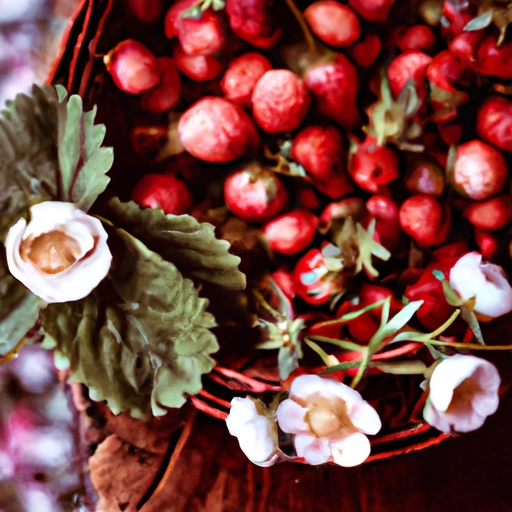Edible Flower
Description

Edible flowers are the blossoms of various plants that can be consumed safely. They have been used for centuries to enhance the flavor, color, and presentation of dishes. With a wide range of edible varieties, these flowers add an element of sophistication and creativity to culinary endeavors. Not only are they aesthetically pleasing, but they also offer unique tastes and aromas that can complement both sweet and savory dishes.
Common uses
Edible flowers are commonly used to add a decorative touch to dishes, but they can also play a more integral role in the flavor profile of a recipe. They are used in salads, desserts, beverages, and as garnishes on a variety of plates.
Nutritional value
Calories
Edible flowers generally contain minimal calories, making them a light addition to any meal.
Protein
While not a significant source of protein, edible flowers can contribute a small amount to one's diet.
Fat
Edible flowers are typically fat-free and can be enjoyed without concern for added fats.
Carbohydrates
The carbohydrate content in edible flowers is usually quite low, with most of it coming from dietary fiber.
Vitamins
Certain edible flowers are rich in vitamins, particularly vitamin C. However, the amount can vary greatly depending on the type and quantity consumed.
Minerals
Edible flowers may contain minerals such as potassium and calcium, but again, these are present in varying amounts based on the specific flower.
Health benefits
Some edible flowers are known for their health-promoting properties, including antioxidant and anti-inflammatory effects. The presence of certain compounds, such as flavonoids and anthocyanins, can contribute to overall health.
Potential risks
It's important to be cautious when consuming edible flowers, as some can cause allergic reactions. Additionally, flowers not grown for consumption may contain pesticides or harmful chemicals.
Common recipes
Edible flowers can be found in recipes like floral-infused syrups, candied flowers for desserts, herbal teas, and elegant salads.
Cooking methods
Edible flowers are often used fresh but can also be crystallized, dried, or infused into liquids.
Pairing with other ingredients
Their delicate flavors pair well with fruits, cheeses, herbs, and both white and sparkling wines.
Summary
Edible flowers are a delightful addition to any dish, offering a blend of beauty and taste that can elevate the dining experience. They have been used throughout history and continue to be celebrated in modern cuisine for their versatility and charm.